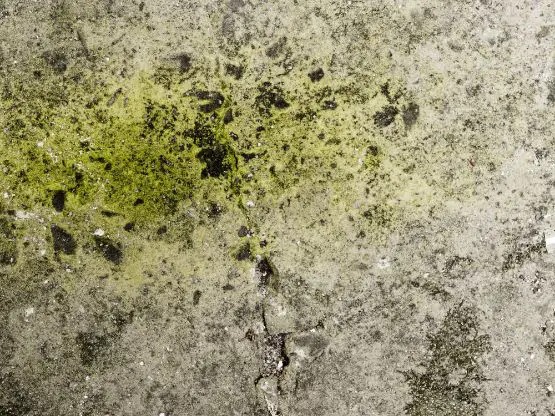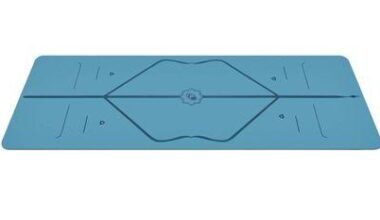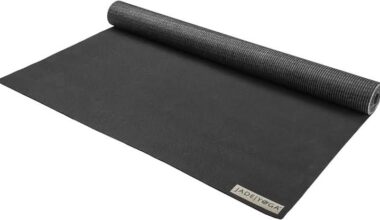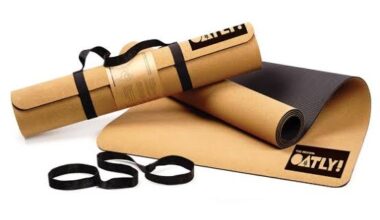Table of Contents Show
Learn the ultimate guide on how to remove mold from yoga mat and keep your practice clean and safe! Dive into the surprising world of yoga mat mold and discover 5 crucial facts.
You’re in your downward dog, feeling every stretch and focusing on your breath, but… what’s that smell? Could it be mold lurking on your beloved yoga mat? Before you recoil in horror, stay calm, grab your zen, and let’s dive into the nitty-gritty of how to remove mold from yoga mat.
Disclosure: As an Amazon Associate I earn from qualifying purchases.
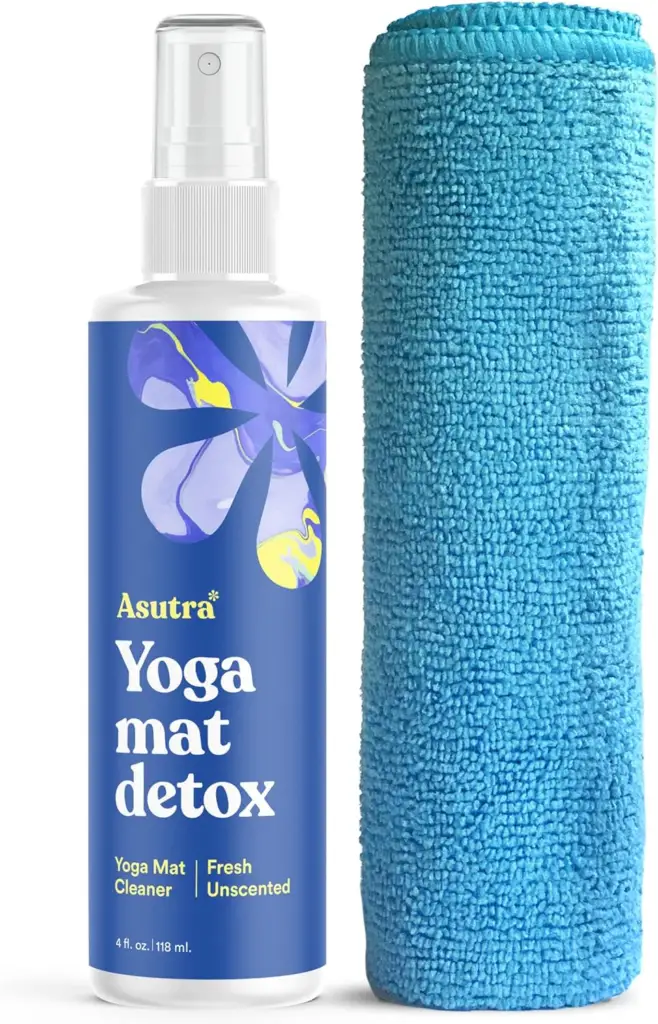
1. The Om-Grown Threat: Unmasking Mold on Yoga Mats
Yoga mats are sacred spaces for practitioners. They’re the territories where you challenge your body, find your center, and attain tranquility. However, just as your mind can harbor fleeting thoughts, your yoga mat can harbor…mold. Say what now?! Yeah, you heard right.
Why is Mold on Your Yoga Mat a Big Deal?
Mold is a sneaky critter. While it’s often associated with old bread and neglected shower corners, it can, unfortunately, claim a yoga mat as its home. Here’s why it’s a significant concern:
- Health Hazards: Mold on your mat can lead to respiratory issues, allergic reactions, and skin irritations. Breathing in mold spores during a deep Ujjayi breath is far from the holistic health yoga promises[2].
- Hygiene: Yoga’s a spiritual, mental, and physical cleanse. A moldy mat is contrary to all those principles. Moreover, think about the times you’ve placed your face right on that mat during child’s pose or shavasana. Comforting, right?
- Mat Longevity: Your yoga mat was probably an investment, both in money and commitment to the practice. Mold deteriorates the mat’s material, shortening its life.
How Does the Mold Get There?
The combo of sweat and the often warm and dark storage of mats creates an ideal environment for mold. With practices focusing on physical exertion, it’s no surprise that yoga mats get damp. And, if left uncleaned or stored in a dank environment, they become the perfect breeding ground for mold[2].
Furthermore, a good mat gets rolled out in various locations—gardens, beaches, wooden floors, or maybe even the occasional rugged terrain. While this allows a diverse yoga experience, each surface has its microbial signature, adding to the mat’s microbial ecosystem.
🍋 2. When Life Gives You Mold, Make a Clean Sweep: How to Remove It
So you’ve spotted that unwelcome fuzzy tenant on your mat. Don’t stress—there’s no need to chant away the bad vibes. Let’s address the issue head-on.
Step-by-step Mold Removal Guide:
- Spot Test: Before you go all in, test any cleaning solution on a small, inconspicuous part of the mat to ensure it doesn’t damage or discolor the material.
- DIY Cleaning Solution: A mix of vinegar and water is a classic cleaning champion. Not only is this combo affordable, but it’s also organic. It kills mold and banishes it from your yoga haven[1]. Here’s what you do:
- Mix equal parts of white vinegar and water in a spray bottle.
- Generously spray the moldy areas.
- Let it sit for a few minutes.
- Using a clean cloth, scrub away the mold. Be gentle; harsh scrubbing can damage your mat.
- Rinse and Dry: Once you’re done, rinse the mat with clean water. This step is crucial to prevent your next Downward Dog from turning into a Sliding Puppy due to residual cleaning solution. Post-rinse, towel off excess water and let the mat air dry, preferably in a sunny spot. Sunlight is a natural mold deterrent[2].
- Prevention is Better than Cure: Once clean, ensure you follow the steps mentioned in later sections to prevent mold’s return. A regular cleaning routine can be a game-changer.
🌼 3. A Stitch in Time: Prevention Methods to Keep Mold at Bay
The real challenge isn’t just getting rid of mold once—it’s ensuring it doesn’t make a triumphant return. Luckily, there are various ways to ensure your yoga mat remains a mold-free zone. After all, prevention is the heart of long-term mat care.
Daily Habits to Embrace:
- Air It Out: After every yoga session, make sure to unfurl your mat and hang it up to air dry. This simple habit can prevent moisture accumulation, making it difficult for mold to thrive.
- Clean Regularly: Even if you don’t see visible dirt or mold, get into the habit of cleaning your mat regularly. A simple wipe down with a cloth dampened with a mixture of water and a few drops of mild dish soap can do wonders.
- Dry Environment: Store your mat in a dry, airy environment. Avoid places like the trunk of your car or a damp basement which can be breeding grounds for mold.
- Use a Yoga Towel: Placing a yoga towel on your mat can absorb sweat and moisture. This not only provides extra grip but also protects the mat from excessive moisture, making it less hospitable for mold.
Invest in Your Practice:
- Quality Mats: Consider investing in a higher quality yoga mat. These mats often have antimicrobial properties that resist bacterial and fungal growth.
- Yoga Mat Sprays: There are numerous commercial yoga mat sprays available in the market that help in cleaning and sanitizing the mat. They can be a great addition to your yoga toolkit.
🌞 4. The Power of Sun and Fresh Air: Natural Mold Deterrents
Sometimes, the most potent solutions come straight from Mother Nature. The combination of sunlight and fresh air can be powerful allies in your fight against mold.
Sunshine Sessions:
- Natural Disinfectant: Ultraviolet (UV) rays from the sun have natural disinfecting properties. Once in a while, allow your mat to bask in direct sunlight for a few hours. It helps in killing off any lingering bacteria or mold spores.
- Air and Light: While storing your mat, choose a spot where it gets adequate air circulation and some indirect sunlight. This not only keeps the mat fresh but also makes mold growth less likely.
Caution While Sunning:
- Not Too Long: While sun is great for mold prevention, overexposure can degrade the materials of some yoga mats. Limit the sun exposure to a few hours and avoid doing it daily.
- Be Mindful of Colors: If your mat is colored, prolonged sun exposure might cause it to fade. Occasionally rotating the mat can ensure even exposure and prevent color discrepancies.
5. The Ultimate Guide on How to Remove Mold from Yoga Mat
Alright, time to get down to brass tacks. Here’s a step-by-step guide:
- Spot the Mold: First, check if your mat has mold. Look for dark spots or areas that have a different texture.
- DIY Cleaning Solution: Mix equal parts of white vinegar and water. Add a few drops of tea tree oil for added anti-microbial properties.
- Scrub-a-Dub: Gently scrub your mat using the solution. Use a soft cloth or sponge.
- Rinse: Once you’ve scrubbed every inch, rinse the mat with water.
- Dry: This is crucial. Hang your mat in a well-ventilated area and ensure it dries completely before using it again.
- Prevent: To keep mold at bay, always air out your mat after use. Consider using a towel on top of your mat during practice to absorb sweat and reduce moisture[2].
6. Natural Cleaners vs. Commercial Cleaners: The Pros and Cons
Alright, let’s dive deep into the realm of yoga mat cleaners. With the wide array of products available, how do you decide which one is right for your mat?
Natural Cleaners:
- Benefits: Natural cleaners, like a blend of water, white vinegar, and essential oils (e.g., tea tree oil), offer a gentle yet effective cleaning solution without the harsh chemicals found in many commercial cleaners.
- Drawbacks: They might require more frequent application compared to their commercial counterparts. Additionally, some people might not be fans of the vinegar smell, although it dissipates quickly.
Commercial Cleaners:
- Benefits: Commercial yoga mat cleaners are specifically designed for mats. They can offer a deep clean, are often pleasantly fragranced, and some come with added antimicrobial properties.
- Drawbacks: They can be more expensive over time and might contain chemicals that aren’t eco-friendly. Additionally, some sensitive individuals might react to the fragrances or ingredients.
You May Also Like: 5 Simple Steps to Make Your Own Yoga Mat Spray: A DIY Guide to Clean and Fresh Mats
Conclusion
The journey of yoga is not just about inner peace but also about understanding and caring for the tools that assist us on this path. A clean, mold-free mat isn’t just a hygiene standard; it’s a commitment to a better, healthier practice.
Remember, your yoga mat is a reflection of your practice. It deserves respect, care, and a mold-free existence. So, next time you roll it out, make sure what you’re feeling isn’t just the burn from the previous day’s core session but also the pride in a mat well-maintained.
You May Also Like: The Ultimate Guide to Crafting Your Own Yoga Mat Disinfectant Spray Recipe: Keep Your Mat Fresh, Clean, and Germ-Free at 0 Cost
FAQs:
Q1. Is mold on a yoga mat dangerous?
A: Yes, mold can lead to various health issues, including allergies and skin infections.
Q2. How often should I clean my yoga mat?
A: After every session for a quick wipe down, and a deeper clean every month or so, depending on the frequency of use.
Q3. Can I use commercial cleaners on my mat?
A: It’s best to check the manufacturer’s instructions. However, a DIY solution of vinegar and water is generally safe for most mats.
Q4. Can I machine-wash my yoga mat?
A: Some mats are machine-washable, but always check the label first.
Q5. How can I prevent mold growth on my yoga mat?
A: Ensure your mat is completely dry before storing it. Using a towel during your practice can also help absorb excess sweat and reduce moisture.
You May Also Like: How to Paint Your Yoga Mat in 7 Easy Steps: A Colorful Journey to a Personalized Practice
